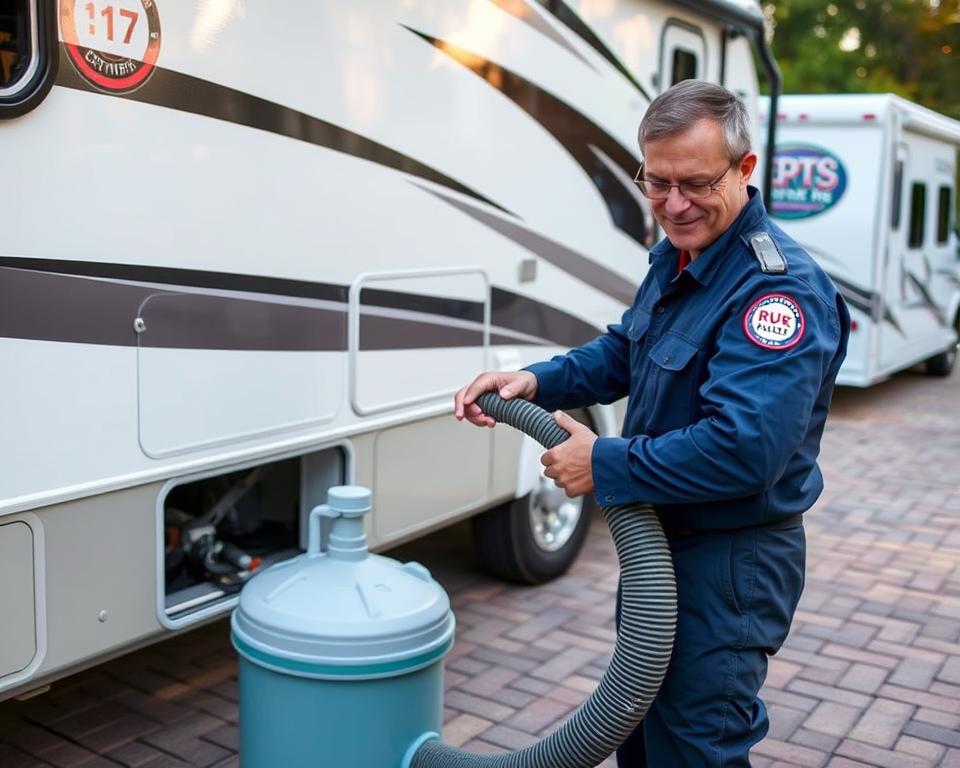Culinary Grease Trap Sanitizing: Keep The Kitchen Spotless
Ever thought about the consequences of ignoring culinary grease interceptor sanitization in a hectic restaurant kitchen? It’s more than just a matter of sanitation; it’s about ensuring an well-functioning grease trap extraction setup. These traps are vital for collecting fats, oils, and grease (FOG) before they can harm plumbing and sewer systems. By emphasizing regular maintenance, you preserve your restaurant’s structure and avoid pricey plumbing problems and stenches.
Comprehending the Significance of Grease Trap Servicing
Grease traps are essential for the efficiency and hygiene of commercial kitchens. They fulfill a crucial function in ensuring business efficiency and adherence with regulations. Understanding how grease traps work and the effects of poor maintenance helps proprietors in making educated choices about restaurant grease interceptor cleaning.
Function of Grease Interceptors in Commercial Kitchens
Grease traps are located near washing stations to catch fats, oils, and grease (FOG) before they reach the drainage system. This is crucial for avoiding pollution and protecting the drainage system. Appropriate grease interceptor upkeep guarantees these traps work efficiently, preserving the environment and the restaurant from penalties or disruptions. Routine inspections are crucial to adhering to grease trap regulations, which specify sanitization and upkeep schedules.
Results of Overlooking Grease Interceptor Cleaning
Not upkeeping industrial grease trap cleaning can cause major complications for kitchen functions and public health. Some potential results are:
- Major sewer system backups, leading to pricey urgent fixes.
- Unpleasant odors in the kitchen and dining areas, lowering customer satisfaction.
- Penalties and legal issues from ignoring grease trap regulations.
- Increased risk of plumbing problems, which could halt culinary activities.
Implementing a routine cleaning strategy, like restaurant grease trap sanitization, can avert these problems. Consistent maintenance maintains adherence with local laws and protects the culinary area.
Kitchen Grease Trap Cleaning: A Comprehensive Manual
Cleaning a grease interceptor is essential for a culinary area’s productivity. It needs the proper supplies and a systematic method. From collecting needed tools to removing waste properly, each stage is crucial for a functional culinary area.
Necessary Tools for DIY Cleaning
Before you start, make sure you have these tools at ready:
- Protective gloves
- Respirator
- Pry bar or spanner
- Scrapers
- Shop vac
Detailed Cleaning Process
Here’s a step-by-step procedure for effective sanitization:
- Lift the grease trap by lifting its cover gently.
- Extract the debris, attempting to extract as much as you can.
- Employ a industrial vacuum to remove any residual bits.
- Scrub the inside of the grease interceptor with mild cleaning agents.
- Flush all debris with clean water.
Guidelines for Correct Removal of FOG Waste
Proper removal of grease waste is crucial for environmental safety:
- For minor quantities, use double-lined garbage bags for removal.
- For greater volumes, engage grease disposal services to adhere to local laws.
| Waste Quantity | Disposal Method | Recommended Services |
|---|---|---|
| Under 5 liters | Double-lined garbage bags | Nearby dump |
| Over 5 liters | Specialized disposal service | Grease reuse services |
Utilizing an biological grease trap treatment can boost your cleaning attempts, naturally dissolving fats and oils. By adhering to these steps, you’ll maintain your kitchen functional and adhere to waste management regulations.
Indicators Your Grease Trap Requires Sanitization
Maintaining your grease trap in peak shape is vital for your commercial kitchen’s efficient functioning. Understanding when to schedule a grease trap cleaning can avert future problems. Several indicators can alert you to the need for an examination.
Usual Signs of Grease Buildup
Look out for these symptoms that imply your grease interceptor requires quick care:
- Unpleasant odors originating from the kitchen or pipes.
- Sluggish basins, signifying clogs from FOG accumulation.
- Visible FOG buildup in and around your drains.
- Recurring plumbing issues, such as blockages and backups.
How Frequent Should Cleaning Be Done?
Routine maintenance of your grease interceptor is essential for effectiveness and adherence to regulations. It’s generally advised to perform reviews and cleanings every four to six weeks. Culinary areas with intense usage might require more regular attention. Employing a specialist for regular grease interceptor maintenance guarantees you meet these standards and maintain your kitchen sanitary.
| Kitchen Type | Suggested Sanitization Interval |
|---|---|
| Low Usage | Every 4-6 weeks |
| Regular Operation | Once every 3-4 weeks |
| Intense Operation | One to two weeks |
Benefits of Professional Grease Trap Services
Hiring specialist grease interceptor sanitization services can significantly boost your kitchen’s efficiency and sanitation. These specialists not only sanitize completely but also advise on the best maintenance schedules for your restaurant. By selecting commercial grease trap pumping services, you’re engaging technicians knowledgeable in grease trap complexities.
Why Choose Grease Trap Pumping Service?
Engaging a grease trap pumping service offers use to specialized equipment and expertise in grease trap management. They ensure your devices are cleaned effectively, avoiding clogs and overflows that could lead to expensive plumbing issues. Regular professional sanitizations assist ensure productivity and enhance client approval.
Adherence to Regulations and Assurance
Using a specialist service also guarantees adherence with grease interceptor rules. Many areas have stringent regulations that establishments must adhere to, and violations can lead to charges or inspections. Engaging a reliable grease trap service offers confidence, ensuring your kitchen meets all guidelines. It also fosters a safe space for staff and patrons.



